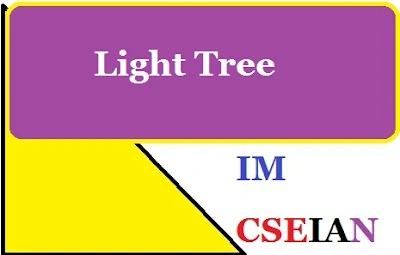Light Tree
Abstract
The concept of a light-tree is introduced in a wavelength-routed optical network. A light-tree is a point-to-multipoint generalization of a lightpath. A lightpath is a point-to-point all-optical wavelength channel connecting a transmitter at a source node to a receiver at a destination node. Lightpath communication can significantly reduce the number of hops (or lightpaths) a packet has to traverse; and this reduction can, in turn, significantly improve the network’s throughput. We extend the lightpath concept by incorporating an optical multicasting capability at the routing nodes in order to increase the logical connectivity of the network and further decrease its hop distance.
Description of Light Tree
The concept of light tree is introduced in a wavelength routed optical network, which employs wavelength -division multiplexing (WDM).Depending on the underlying physical topology networks can be classified into three generations:
a).First Generation: these networks do not employ fiber optic technology; instead they employ copper-based or microwave technology. E.g. Ethernet.
b).Second Generation: these networks use optical fibers for data transmission but switching is performed in electronic domain. E.g. FDDI.
c).Third Generation: in these networks both data transmission and switching is performed in optical domain. E.g. WDM.
WDM wide area networks employ tunable lasers and filters at access nodes and optical/electronic switches at routing nodes. An access node may transmit signals on different wavelengths, which are coupled into the fiber using wavelength multiplexers. An optical signal passing through an optical wavelength-routing switch (WRS) may be routed from an output fiber without undergoing opto-electronic conversion. A light path is an all-optical channel, which may be used to carry circuit switched traffic, and it may span multiple fiber links. Assigning a particular wavelength to it sets these up.
In the absence of wavelength converters, a light path would occupy the same wavelength continuity constraint. A light path can create logical (or virtual) neighbors out of nodes that may be geographically far apart from each other. A light path carries not only the direct traffic between the nodes it interconnects, but also the traffic from nodes upstream of the source to nodes upstream of the destination. A major objective of light path communication is to reduce the number of hops a packet has to traverse.
LIGHT PATH
A light path is an all-optical channel, which may be used to carry circuit switched traffic, and it may span multiple fiber links. Assigning a particular wavelength to it sets these up. In the absence of wavelength converters, a light path would occupy the same wavelength continuity constraint.
A light path can create logical (or virtual) neighbors out of nodes that may be geographically far apart from each other. A light path carries not only the direct traffic between the nodes it interconnects, but also the traffic from nodes upstream of the source to nodes upstream of the destination. A major objective of light path communication is to reduce the number of hops a packet has to traverse.




